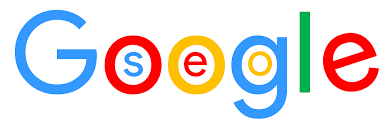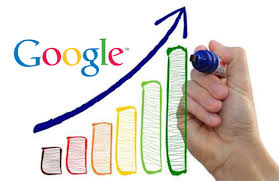It doesn’t make much sense to invest in having a fantastic website if it doesn’t have great SEO. At the end of the day, having a great website is useless if no one is finding it on the web! Bing, Google, Yahoo and all other search engines could really care less about your pretty photos and web design. They care about things like alt tags, file names, keywords, and hundreds of other really, really boring tech things. However, understanding those “boring tech things” is the key to bringing you new success. Misunderstanding them could help put you out of business, quick!
SEO stands for Search Engine Optimization, and basically it means coding your website in a clever way to emphasize your website over other websites when potential customers search on Google, Bing, Yahoo, and other search engines. It’s a process of improving the volume or quality of traffic to your website via “natural” or un-paid search results in search engines. The underlying theory about this is that the earlier (Or higher) a site appears in the search results list, the more visitors it will receive from the search engine. SEO also targets different kinds of search, including image search, local search, video search, and so on. It’s very comprehensive and
powerful! The following ten pointers are some often very overlooked or common mistakes.
10 simple tips to improve SEO and get noticed on the web!
The problem with flash is that it is useless. Simply put, haha. It is considered invisible to search engines, so it adds no value to your SEO efforts. Use WordPress, not flash!
Don’t try to trick Google. Just don’t do it, because they will find out and penalize you. Recently, some fairly high-profile portfolio websites were punished by Google for trying Black Hat techniques, in the long run sneaky tactics will do more harm then good.
Social Networking is a great way to increase organic traffic, but beware of only promoting yourself. Promote other posts and websites you like, this is how you build a network of good will and have them link back to you. This will help you rank higher in Google.
Don’t forget to highlight and emphasize information on your website that you consider important, as well as keywords. Use h1-h6 to highlight headings or subtitles of an article or important sentences. Using the strong tag also helps, but beware of OVERDOING it.
Thanks to WordPress and plugins like Google XML Sitemaps, this has become a very easy task! Google has a handful of useful tools as well. These include Website Optimizer and Webmaster Central.
Some themes use a tremendous amount of code to create the layout and design, and Google will sift around the source code to find the info it needs. So, the more code taht you have, the less content and keyword density you’ll have. Fast performing themes are important for your Google ranking, because the performance of a website is an important one of two hundred criteria that determine your ranking.
Can’t say this enough. USE UNDERSTANDABLE permalinks. Instead of “https://yoursite.com/page-id?495/”, use “https://yoursite.com/organic-heirloom-tomato/”. Please remember that the first four words in a permalink are the only relevant ones. Google really doesn’t care about any succeeding words in your permalinks, so remember that!
Little known to most people, Google draws images into the calculation for SEO page ranking. Google displays both text and images on it’s search results page, draws on relevant pictures in the post itself, which are linked to the corresponding page. So when you are naming your .jpg files, give them descriptive names, not just a series of random numbers. Instead of “4848576DJF9.jpg”, describe what the image is of. If it’s a tomato plant, make the file name “Organic-heirloom-tomato.jpg”. This will yield better search results for your website. As well, don’t forget to use the alt tag and title tag for your images, which also provide better usability and improve SEO.
Always exchange back links with relevant websites that relate to your posts. In addition, do this too websites that hold a high page ranking, this will help improve your SEO by proxy. They’re called High Authority Websites and it’s advantageous to back link them.
Any type of optimization will help, but only in combination with unique content and high quality. Preferably, the text contains keywords that highlight the overall theme of the post and the content has to be kept legible and understandable. Use keywords wisely, that’s very important. Text is primarily written for visitors, not for search engines.
One of the best ways to easily improve and optimize your page ranking is to download and install an SEO plugin, like the WordPress SEO plugin by Yoast.
This could have been a much more comprehensive list, like I said there are over 200 criteria that Google sifts through when determining ranking including lesser known criteria such as age of domain, duplicate content,
meta description and tags, the level of activity on the site and even more. We’ll have more blogs soon that delve into further details.
Lastly, relax. Don’t try so hard. Keep a steady pace updating your website and publish quality content that is creative, unique, and relevant to your website. As long as you follow these suggestions, you should see an increase
in traffic and ranking.








